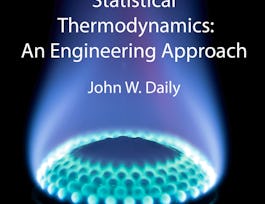This comprehensive HVAC course begins by establishing a solid foundation in the core concepts of air conditioning and refrigeration. Students are introduced to the technologies that are fundamental to controlling and manipulating air temperature and humidity, setting the stage for a deeper exploration of the subject.
A pivotal aspect of effective HVAC system design is understanding the critical factors influencing the process. The course delves into these factors, ensuring that students grasp the intricacies of designing systems that meet specific requirements, considering aspects such as energy efficiency, environmental impact, and cost-effectiveness. The properties of air and vapor take center stage in the next phase of the course. Psychrometry, the study of air and its properties, is explored in depth. This includes an examination of psychrometric properties and charts, emphasizing their vital role in designing systems that efficiently regulate temperature and humidity. The course then moves on to dissect the major components of air conditioning and refrigeration systems, providing students with a comprehensive understanding of compressors, evaporators, condensers, expansion devices, and refrigerants. This foundational knowledge sets the stage for advanced studies and practical applications. Psychrometric processes and their application in air conditioning design are explored, with a focus on understanding the major air streams and their roles in achieving optimal comfort and efficiency in indoor environments. The classification of air conditioning systems adds another layer of knowledge, providing insights into various system types and their applications. A comprehensive examination of the vapor compression refrigeration cycle follows, unraveling the processes of compression, condensation, expansion, and evaporation. This phase includes an in-depth exploration of compressors, evaporators, condensers, expansion devices, and refrigerants, offering students a complete understanding of their functions within the broader system. The introduction of alternative refrigeration systems, specifically vapor absorption and thermoelectric refrigeration, broadens the scope of knowledge and prepares students to tackle diverse cooling challenges in the field. Heat Load Calculations, a fundamental aspect of HVAC design, are explored in detail. Students learn to assess various factors, including external and internal heat gains, occupancy, lighting, and climate conditions, to accurately size and design HVAC systems. Real-world samples and case studies are integrated to bridge the gap between theory and practical application. Psychrometry is presented as a science crucial to HVAC design, and the course introduces learners to psychrometric charts, showcasing their practical applications in HVAC systems. The integration of Heat Load Calculations and Psychrometry becomes a specialty of the course, providing students with the skills to control psychrometric data in heat load assessments for optimal system design and efficiency. In conclusion, this comprehensive course empowers students with industry-relevant skills to navigate the intricacies of air conditioning and refrigeration, from core concepts to practical applications in system design, psychrometry, and heat load calculations. It serves as a robust foundation for individuals aiming to excel in the dynamic field of HVAC engineering. Target Learners: 1. Knowledge of Thermodynamics & Heat Transfer 2. Undergraduate students of Mechanical who are in either Vth, VIth, VIIth or VIIIth semester 3. Graduate students of Mechanical 4. Working professionals with B.Tech./B.E., in Mechanical 5. Diploma students of Mechanical




















